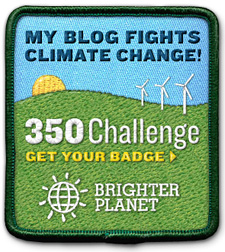 |
| Oil escaping from the Sheng Neng 1 (Photo:Maritime Safety QLD) |
On Saturday April 3rd, the
Sheng Neng 1, a Chinese ship transporting coal hit and stuck itself on a sandbar within the Great Barrier Reef marine park, 70 kilometres east of the Great Keppel Island. The incident caused damaged to the ship, leading to a leak of its fuel tanks.
The ship carries around 975 tons of heavy fuel oil as well as 65,000 tons of coal. I am shocked to read that some newspapers are minimizing the 975 tons, saying it is a fairly small quantity of oil compared to major oil spills in the sad history of man. But to my humble opinion,
even 1 kilogram of heavy fuel oil is pollution!. Pollution is bad wherever it is occurring, but the fact that this one is happening within a protected marine park, known as one of the great natural wonders of the world, is simply sickening. When I see how fragile coral reefs are, this really saddens me.
We can't thank enough the people (probably not the ones responsible) doing their best to try and contain the leak in such crucial moments. At the moment I am speaking, oil is still leaking out of the boat, 3 days later, and it is said that bad weather could further damage the boat and break it in half, causing the total amount of fuel to escape from the wreck.
But what shocks me even more, is that the ship was in a restricted zone 15 kilometers outside the shipping lane and that its crew did not notify authorities of their location for two hours. This is a clear example of a wrong practice. It is not a navigation error, the ship purposely followed this route. The reason for this behavior is that ships are ready to take shortcuts, even illegally to beat deadlines and save on fuel costs.
 |
| The Sheng Neng 1 (Photo:The Courier-Mail) |
According to local fishermen, this is regular practice used on a "weekly basis" by cargo boats and tankers. It is common sense to know that if the zone is restricted, it is for a good reason. If this has been happening for years, an accident had to occur one day.
This event comes one year after another oil spill in the region, when a container carrier, the Pacific Adventurer, spilled oil in the Moreton Island and Sunshine Coast. Two oils spills in two years! Enough is enough!
If not much oil is spilled with the Sheng Neng 1, we can be glad this happened as it will open our eyes and hopefully those of the authorities, on illegal practices that threaten the environment in the name of profitability. From now on, we hope to see ships using these methods be heavily fined and the responsible ones thrown in jail.











